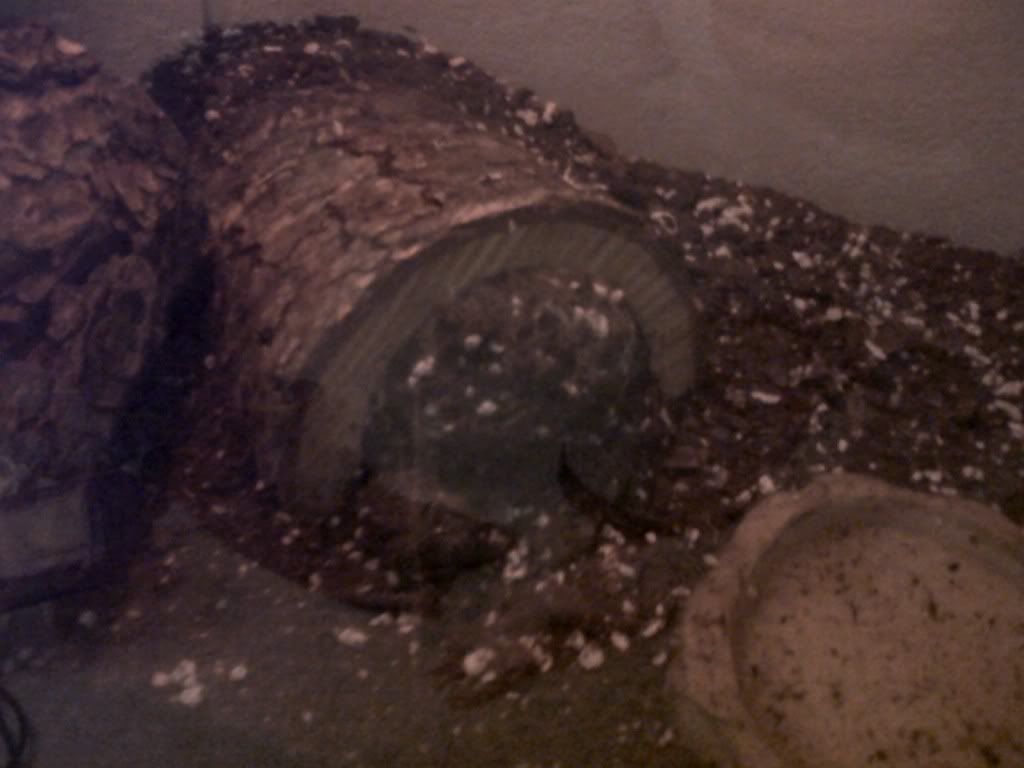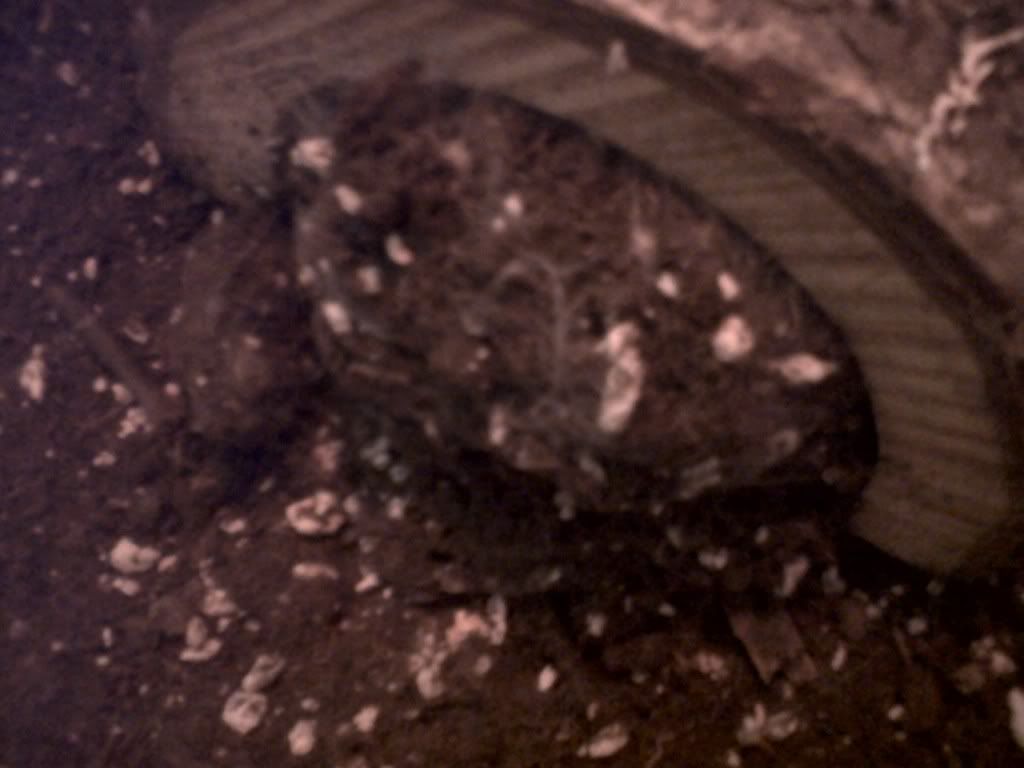Hey everyone. I'm relatively new to being a T owner. And of course my first T is a G.rosea. I've read a lot of posts on here as well as the sticky provided on Rosie care. However, something interesting has happened today that I just had to ask some questions.
First off, some background info:
Langston: G.rosea with roughly a 3 inch legspan. Only had him for 1 month. Friends bought him for me as a present at a LPS. Kept in a 10g tank filled 2/3 of the way with peat substrate. Also, the pictures I took were from my phone so I apologize in advance for the quality.
This afternoon I walked into my room and happen to glance at my G. rosea Langston's enclosure. To my surprise I see him moving clumps of dirt from the back of his hide and bringing it out to the front. I'm thinking "what a little earth mover this guy is!" After taking a few pictures, I left him alone since I had to go to a meeting.

Langston getting to work outside his hide

A closer view. I know the pictures are horrible because I only had my phone available at the time. However, if you look closely you can somewhat see the clump of dirt between Langston's chelicerae
After going to my meeting, eating dinner and relaxing in my living room I come back into my bedroom to check on Langston. What I find is this:


He has completely sealed himself off in his hide behind a pile of rolled up substrate and his own webbing. I was very surprised when I saw this!
I know that burrowing is a natural behavior of tarantulas and I have seen Langston burrow a little bit before. However, I haven't seen him move this much substrate around. I'm not worried about feeding him because it has only been a few days since I fed him last. Plus I tried feeding him yesterday but he wouldn't even pay attention to the cricket even if it was near him. My thought is that he could be sealing himself off to molt. I've read that most Ts that come from LPSs often molt as soon as they feel comfortable in their new enclosures. Could this be what's happening with Langston? What do you guys think? Any information would be greatly appreciated since if he is molting or about to, I would like to take the proper course of action (providing the right temp and adequate humidity levels). Thanks in advance!
- Judd
First off, some background info:
Langston: G.rosea with roughly a 3 inch legspan. Only had him for 1 month. Friends bought him for me as a present at a LPS. Kept in a 10g tank filled 2/3 of the way with peat substrate. Also, the pictures I took were from my phone so I apologize in advance for the quality.
This afternoon I walked into my room and happen to glance at my G. rosea Langston's enclosure. To my surprise I see him moving clumps of dirt from the back of his hide and bringing it out to the front. I'm thinking "what a little earth mover this guy is!" After taking a few pictures, I left him alone since I had to go to a meeting.

Langston getting to work outside his hide

A closer view. I know the pictures are horrible because I only had my phone available at the time. However, if you look closely you can somewhat see the clump of dirt between Langston's chelicerae
After going to my meeting, eating dinner and relaxing in my living room I come back into my bedroom to check on Langston. What I find is this:


He has completely sealed himself off in his hide behind a pile of rolled up substrate and his own webbing. I was very surprised when I saw this!
I know that burrowing is a natural behavior of tarantulas and I have seen Langston burrow a little bit before. However, I haven't seen him move this much substrate around. I'm not worried about feeding him because it has only been a few days since I fed him last. Plus I tried feeding him yesterday but he wouldn't even pay attention to the cricket even if it was near him. My thought is that he could be sealing himself off to molt. I've read that most Ts that come from LPSs often molt as soon as they feel comfortable in their new enclosures. Could this be what's happening with Langston? What do you guys think? Any information would be greatly appreciated since if he is molting or about to, I would like to take the proper course of action (providing the right temp and adequate humidity levels). Thanks in advance!
- Judd
